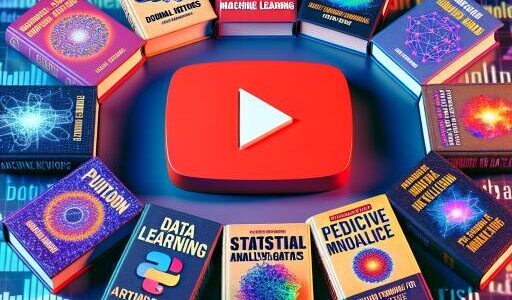Accessible Language Models: Bridging the Gap with Efficient Code
In the realm of programming and artificial intelligence, projects like Andrej Karpathy’s LLM.c have sparked a groundbreaking realization. The LLM.c project showcases not just the prowess of lower-level programming languages such as C but also underlines an essential narrative in the development of advanced language models. The core of this discussion revolves around crafting machines that not just mimic human language but evolve, showcasing an ever-expanding understanding reminiscent of living beings. However, the magic lies not in the complexity but in the simplicity and accessibility of the technology.
LLM.c’s minimalistic approach, devoid of modern deep-learning libraries, highlights a critical advantage. This approach empowers the software to operate efficiently across a vast array of devices, including those with limited processing capabilities. Such a compact and efficient coding method makes advanced language models more accessible, enabling them to run swiftly with the right hardware resources. By democratizing these language models, Karpathy opens up a new world of possibilities for students, hobbyists, and researchers who can now explore complex AI technologies without the burden of excessive costs or proprietary restrictions.
This innovative project serves as a vital educational tool, peeling back the layers of language model development to reveal its foundational elements. The understated value of LLM.c as an academic resource cannot be overstressed. It provides invaluable insights into the nuts and bolts of model building, including algorithms, data structures, and optimization techniques. Such clarity not only enriches the knowledge base of both professionals and students but also lays down a solid foundation for the evolution of novel algorithms aimed at addressing real-world issues rather than merely replicating existing patterns.
While the allure of high-cost, large-scale language models is undeniable in both corporate and academic realms, projects like LLM.c emphasize a different perspective on advancement. By adopting a straightforward and transparent approach, LLM.c democratizes the understanding and appreciation of language models, making them more accessible to a broader audience. This shift in perspective could significantly influence how society perceives and engages with AI technologies, potentially making language models a more familiar and integral part of our daily lives.
Karpathy’s commitment to fundamental principles, such as low-level language programming and rigorous academic pursuit, shines through in his LLaMA paper. As advanced programming frameworks continue to evolve, the need for a bridge between high-level abstractions and the underlying hardware becomes increasingly apparent. LLM.c and similar projects prove that the potential of programming languages as tools is fully realized only when wielded by insightful and skilled programmers. These individuals have the unique capability to utilize such tools in ways that profoundly impact society and beyond.
The advancement of technologies like natural language processing and language models highlights a key theme: the importance of foundational principles and methodologies. As developers and scientists push the boundaries of what’s possible, their efforts must be guided by a clear understanding of the basic tenets of their field. Only by continually venturing into uncharted territories can we hope to break down the perceived barriers surrounding language understanding and modeling, potentially unlocking new avenues for communication across various industries and among diverse populations.
In conclusion, the story of LLM.c is not just about a programming marvel but about paving a more inclusive and accessible path to advanced language modeling. By stripping down to the basics and focusing on the efficiency and educational value of code, Karpathy and similar innovators are bridging the gap between high-tech AI language models and the general populace. This not only enhances our collective understanding of artificial intelligence but also democratizes the power of technology, making it a tool for empowerment rather than exclusion.










